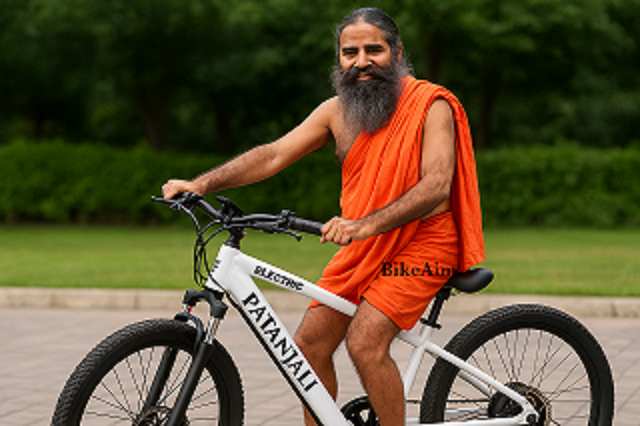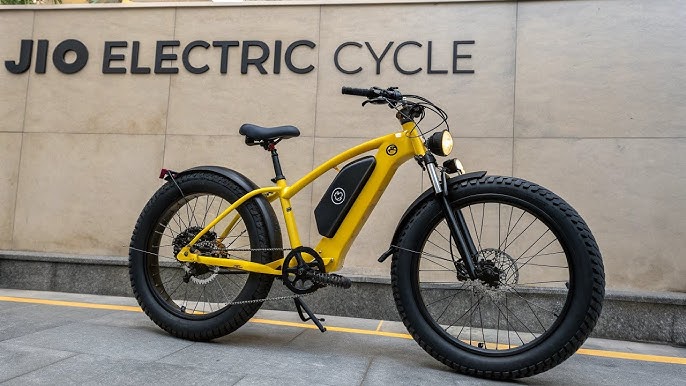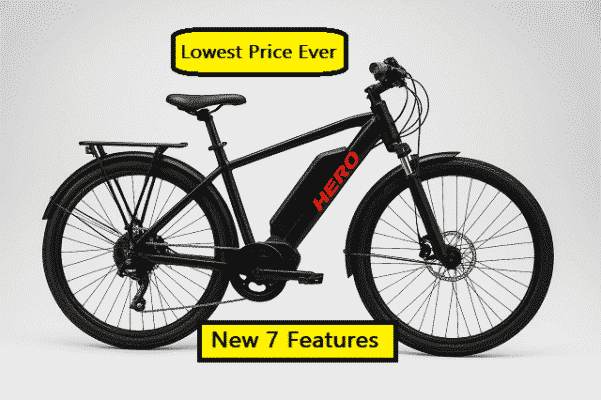This is the promise of the Patanjali Electric Cycle, a game-changing product launched in 2025 by Patanjali Ayurved, a brand renowned for making wellness accessible and affordable. Priced at an unprecedented ₹5,000, this electric cycle offers an 80-110 km range per charge, challenging the notion that sustainable transport is a luxury. While some discussions mention a potential 80 km range, current evidence suggests a range of 80 km, which is still remarkable given its price point. This launch could redefine how millions of Indians commute, blending affordability with environmental consciousness.
In this comprehensive guide, we’ll explore the Patanjali Electric Cycle, its features, price, range, and its potential to transform India’s mobility landscape. From urban commuters to rural vendors, this cycle is poised to empower diverse groups while contributing to a greener future.
Launch Timeline
While exact dates remain unconfirmed, industry insiders and supply-chain whispers suggest:
- Pre-launch teasers: Q3 2025
- Official unveiling: Late October 2025, coinciding with Diwali festivities
- Dealer bookings open: November 2025
- First deliveries: December 2025
Expected Price Bracket & Financing
Given the wide discrepancy in rumours, we can anticipate two potential trims:
| Trim | Estimated Price | Key Appeal |
|---|---|---|
| Basic E-Cycle | ₹5,000–₹7,500 | Ultra-budget; entry-level pedal assist |
| Advanced E-Cycle | ₹12,000–₹15,000 | Longer range, detachable battery, LCD display |
- EMI Options:
- Starting at ₹350/month via Bajaj Finserv
- Zero-down payment offers during the launch period
- Battery Leasing: To hit lower on-road prices, Patanjali may offer “battery as a service” models, reducing the upfront cost further.

Range & Performance
While the scooter rumours boasted an improbable 440 KM, realistic benchmarks for e-cycles centre around 80–110 KM per charge:
- Patanjali Basic: 80 KM (25 KM/h top speed)
- Patanjali Advanced: 100–110 KM (up to 30 KM/h)
With a detachable Li-ion battery (36 V/10 Ah) and a 250 W hub-motor:
- Eco Mode: Pedal assist only; conserves battery
- Sport Mode: Full-power electric drive; for hilly terrain
- Auto Mode: Intelligent switching
Features and Specifications
Patanjali’s brand ethos, combining Ayurveda with modern tech, suggests a focus on sustainability and user well-being. Anticipated features include:
- Detachable Lithium-ion Battery:
- Charge anywhere in 4 hrs
- Swap-and-go convenience
- Digital LCD Console:
- Real-time speed, range, battery status
- Regenerative Braking:
- Recovers energy on downhill rides
- Smart Connectivity:
- Bluetooth pairing for turn-by-turn navigation
- Mobile app for lock/unlock and geo-fencing
- Eco-Friendly Build:
- Aluminium-alloy frame (lightweight & rust-proof)
- Bamboo-deck options (aligning with Patanjali’s natural materials ethos)
The Patanjali Electric Cycle 2025 is designed to balance affordability with functionality, making it a standout in the electric vehicle market. Here’s a detailed look at its specifications:
| Feature | Details |
|---|---|
| Model | Patanjali Electric Cycle 2025 |
| Price | Starting at ₹5,000 |
| Range per Charge | 80 – 110 km |
| Motor | 250W brushless DC |
| Battery | 8.8Ah/36V lithium-ion |
| Weight | 22 kg |
| Charging Time | 4 – 6 hours |
| Operating Cost | ₹0.15 per km |
| Power Modes | Eco, Standard, Power |
| Extra Features | LCD display (speed, battery, distance), USB port |
Why Patanjali Electric Cycle Could Disrupt the Market
- Brand Trust: Patanjali’s consumer base already spans FMCG to personal care entering mobility could leverage that loyalty.
- Price Disruption: If rumours hold, a ₹5,000 price point would undercut every competitor.
- Pan-India Network: Yoga centres and retail outlets could double as sales/distribution points.
Sustainability Edge: With rising fuel costs and urban pollution, affordable e-cycles dovetail with India’s push for EV adoption.

Comparison: Patanjali vs. Other Budget E-Cycles
| Feature | Patanjali E-Cycle (Rumoured) | Hero Lectro C3 | Ninety One ZX |
|---|---|---|---|
| Price | ₹5k–₹15k | ₹29,999 | ₹27,998 |
| Range | 80–110 KM | 70 KM | 80 KM |
| Motor | 250 W | 250 W | 250 W |
| Battery | 36 V/10 Ah Li-ion | 36 V/7.5 Ah Li-ion | 36 V/10.4 Ah Li-ion |
| Display | LCD + App | LED panel | LCD with BT |
| Warranty | 2 years | 2 years | 2 years |
Market Impact: A Paradigm Shift
The Patanjali Electric Cycle could transform India’s transportation landscape. With 250 million cyclists in the country, even a 5% adoption rate could see 12.5 million electric cycles on the roads, significantly reducing carbon emissions and fuel costs.
Economic Advantages
- Cost Savings: A petrol two-wheeler costs ₹80,000 upfront and ₹3 per km to operate, while the Patanjali cycle costs ₹5,000 and ₹0.15 per km, a 95% reduction in operating costs.
- Accessibility: Priced at less than a month’s minimum wage in many states, it’s affordable for low-income groups. Patanjali offers weekly installments starting at ₹100 and a ₹1,000 discount for trading in old bicycles.
- Distribution: Patanjali’s extensive retail network, especially in smaller cities and rural areas, ensures wide accessibility, unlike premium EV brands that focus on urban centers.
Environmental Benefits
- Emission Reduction: Petrol two-wheelers emit 2.5 kg of CO2 per 100 km. For a commuter traveling 2,000 km annually, that’s 50 kg of CO2. The Patanjali cycle reduces this by 40-60%, and as India’s grid incorporates more renewables, the benefits will grow. Consumer Awakening.
- Urban Air Quality: With two-wheelers comprising over 70% of India’s vehicle fleet, widespread adoption of electric cycles could significantly improve air quality in cities.

Social and Environmental Impact
The Patanjali Electric Cycle is more than a mode of transport; it’s a tool for social and environmental change.
Social Benefits
- Empowering Communities: For students, it means faster, safer commutes to school. For workers, it expands access to job opportunities in the suburbs or industrial zones. For vendors, it extends delivery ranges to Chennai Vizha.
- Rural Connectivity: In rural areas, the cycle provides access to urban amenities without the need for costly vehicles, bridging the urban-rural divide.
Environmental Impact
- Lower Carbon Footprint: By reducing reliance on fossil fuels, the cycle contributes to India’s sustainability goals.
- Scalable Impact: If even 10% of India’s cyclists switch to electric cycles, the reduction in emissions could be equivalent to removing millions of petrol vehicles from the roads.
Future Prospects
Patanjali’s entry into the EV market signals a bold new direction. The initial 100,000-unit run is a test, but the buzz suggests demand could exceed supply. Given Patanjali’s track record of disrupting markets from toothpaste to noodles, the company may expand its EV portfolio to include electric scooters or rickshaws. Reports of a Patanjali Electric Scooter with a 440 km range have surfaced, though some skepticism exists about its feasibility, Financial Express.
Future iterations of the electric cycle could potentially achieve the 80-110 km range mentioned in some discussions, possibly through battery upgrades or enhanced power management. Patanjali’s focus on affordability and local manufacturing positions it to scale rapidly, potentially making electric mobility a household reality across India.
Conclusion
The Patanjali Electric Cycle 2025 is a bold step towards making electric mobility accessible to all. Its ₹5,000 price tag, 80 km range, and innovative features challenge the status quo, offering a practical solution for commuters and a lifeline for low-income groups. While the 110 km range mentioned in some discussions remains unverified, the current 80 km range is a remarkable achievement for the price.
This cycle is more than a product; it’s a movement towards sustainability, affordability, and inclusivity. As Patanjali continues to innovate, we may see more groundbreaking EVs that redefine transportation in India. Ready to join the revolution? Share your thoughts in the comments and explore how the Patanjali Electric Cycle could transform your daily commute!
Call-to-Action
What do you think? Will Patanjali deliver on these promises, or is this just another buzz? Share your thoughts in the comments below, subscribe for launch updates, and don’t forget to check out our latest e-bike comparisons
- Subscribe to get more in-depth articles about motorcycle reviews, maintenance tips, and tour itineraries.
- Explore Related Content: Check out our detailed Jio Electric Cycle 2025 post for performance-oriented options.
- Join Our Community: Follow us on Facebook, Telegram, Instagram, and Twitter for real-time updates and rider meetups.
What is the warranty period?
Specific warranty details are not yet public, but Patanjali typically offers warranties. Check with retailers for exact terms.
How long does it take to charge the Patanjali Electric Cycle?
It takes 4-6 hours for a full charge, suitable for overnight charging.
Can it be pedaled manually?
Yes, manual pedaling is an option, ideal for exercise or conserving battery.
Where can I buy it?
Available through Patanjali’s retail stores, with deliveries starting in 2025, Rooh-e-Seemanchal.


